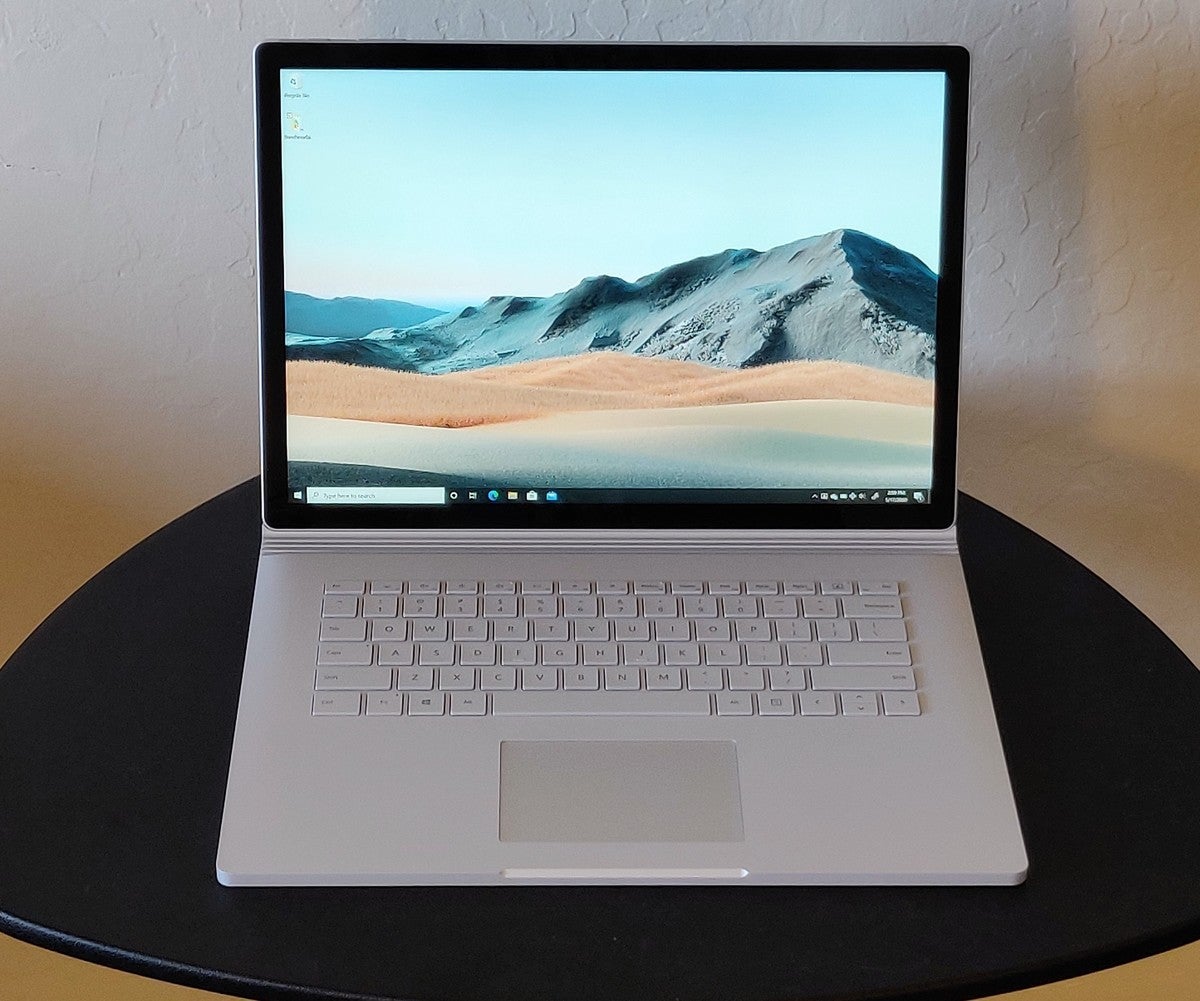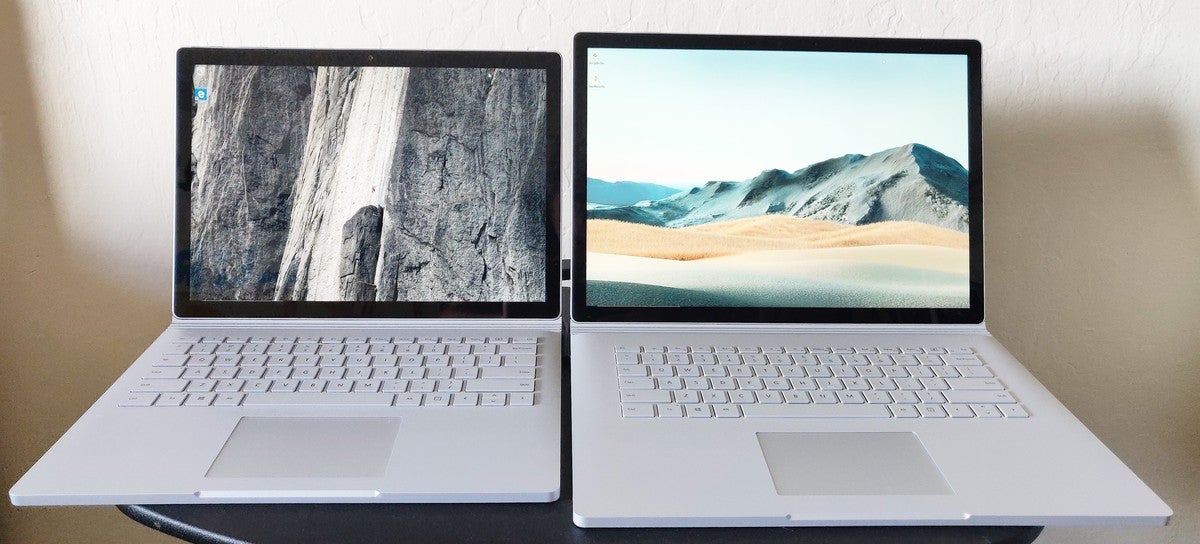Microsoft Surface Book 3 review: The 'ultimate laptop' needs new ideas

Today's Best Tech Deals
Picked by PCWorld's Editors
Top Deals On Great Products
Picked by Techconnect's Editors
The Surface Book 3 continues Microsoft’s five-year mission to create the “ultimate laptop," still uniquely melding a tablet and keyboard base that can be used to create, work, and game.
But the goal is harder to achieve in 2020 than ever before. At $1,599 up to $3,400, the Surface Book 3 is pricey. Worse, it offers little improvement over a new and very strong generation of dedicated laptops, from gaming machines with Nvidia’s latest RTX hardware to consumer devices optimized for extreme battery life and connectivity. Even Microsoft’s own Surface Pro 7 provides a superior tablet experience to the Surface Book 3’s.
The Surface Book 3 is a fantastic product for the do-it-all niche it serves. It’s just that as laptops around it continue to evolve and improve, its niche continues to shrink.
This review is part of our ongoing roundup of the best laptops. Go there for information on competing products and how we tested them.
Surface Book 3 prices
Microsoft's Surface Book 3 product line will be available May 21, with two sizes to choose from: 13.5-inch and 15-inch. The Surface Book 3 will ship with Windows 10 Home, a somewhat odd choice for a laptop priced like a mobile workstation. A separate version, the Surface Book 3 for Business, will ship with Windows 10 Pro.
What follows are the prices, and then the detailed specs, of both models.
 Mark Hachman / IDG
Mark Hachman / IDG
Microsoft’s 13.5-inch Surface Book 2 (left) vs. the 15-inch Surface Book 3 (right).
13.5-inch:
- Core i5-1035G7, 8GB RAM, 256GB SSD, Iris Plus: $1,600
- Core i7-1065G7, 16GB RAM, 256GB SSD, GeForce GTX 1650 (Max-Q): $2,000
- Core i7-1065G7, 32GB RAM, 512GB SSD, GeForce GTX 1650 (Max-Q): $2,500
- Core i7-1065G7, 32GB RAM, 1TB SSD, GeForce GTX 1650 (Max-Q): $2,700
15-inch:
- Core i7-1065G7, 16GB RAM, 256GB SSD, GeForce GTX 1660Ti (Max-Q): $2,300
- Core i7-1065G7, 32GB RAM, 512GB SSD, GeForce GTX 1660Ti (Max-Q): $2,800
- Core i7-1065G7, 16GB RAM, 1TB SSD, GeForce GTX 1660Ti (Max-Q): $3,000
- Core i7-1065G7, 32GB RAM, 2TB SSD, GeForce GTX 1660Ti (Max-Q): $3,400
Microsoft offers a discount for education and military professionals, if you buy directly from Microsoft. Members of the Microsoft Rewards program, currently in limited beta, offers an additional 7 percent rebate.
Surface Book 3 specs and features
As you can see from the specs below, we were given the 15-inch Surface Book 3 with the Nvidia GeForce GTX 1660 Ti (Max-Q) GPU option for review. The Quadro RTX is the best choice if the Surface Book 3 is to be used as a mobile workstation. The RTX hardware supports real-time ray tracing (and Microsoft’s gorgeous Minecraft RTX beta). But the GeForce GTX 1660 Ti should be a excellent choice for a consumer lifestyle.
Surface Book 3 design and display
The Surface Book’s unique design continues with version 3: It folds like a traditional clamshell laptop, or the display detaches to be used as a tablet. The Surface Book 3 reclines a bit less than other laptops do, about 50 degrees off of the horizontal.
You can even mount the tablet backward in “presentation mode” for others to view your screen. Microsoft says it’s sped up detachment time to a second or two. The tablet will reattach itself if you don’t remove it, I noticed.
The Surface Book 3’s beautiful PixelSense touch display is as good as ever. It produced 496 nits of luminosity by our measurement, twice what we consider comfortable for indoor work. Both “enhanced” and “sRGB” modes are available for color fidelity in design work.
The ability to detach the display is the Surface Book 3’s most distinctive feature, but not its best. Both the 13.5-inch and the 15-inch Surface Book 3 tablets are uncomfortably awkward to hold. Because they lack the kickstand of a Surface Pro 7, they’re good for just one thing: drawing, using a Surface Pen or Surface Dial (neither included). Propping it up to watch Netflix simply isn’t as effective as with a Surface Pro or Surface Go. The Surface Book 3 really works best as a traditional clamshell PC.
The Surface Book 3’s price suggests a powerful Intel H-class Core chip might be inside, but because the CPU is mounted behind the display, the excellent Ice Lake U-series chips are used instead. The discrete GPU (if there is one) resides in the base. The Surface Book 3’s memory, however, has been substantially upgraded from the prior generation, from 1,866MHz DDR3 to the current 3,733MHz LPDDR4.
Microsoft's claim that the Surface Book 3 includes its "fastest SSD ever" applies only to the 1TB and 2TB SSDs in the most expensive versions. Our review unit's fast 512GB Toshiba SSD (the same used in the “Ice Lake” version of the Surface Laptop 3) sufficed for documents and a few games.
The Surface Book 3’s connectivity is frustratingly limited to a single USB-C with no Thunderbolt support, the same as in the Surface Book 2. Power and I/O are mostly handled by the two legacy Surface Connect ports, only one of which is exposed to the user while the tablet is docked. A pair of USB Type-A ports support legacy hardware.
Surface Book 3 cooling
Microsoft uses a hybrid cooling solution: heat pipes within the tablet, and fans pushing heat out of vents within the base. To Microsoft’s or Intel’s credit (or both), the Surface Book’s fans rarely turn on. When they do, they often push out little more than a gentle breeze—unless gaming or more intensive work is involved, when it heightens to a powerful whoosh. Part of that behavior may be due to the default “best battery” Windows power settings.
Has Microsoft solved the Surface Book’s power problem?
Microsoft has apparently solved its inability to supply enough power to the Surface Book 2. (Because both the native charger as well as the Surface Dock couldn’t deliver enough power, the Surface Book 2 was forced to run down the battery—even while plugged in!—to power the latest games and GPU-intensive apps.) Kicking up the Surface Book 3’s supply voltage to 127W (and launching a new high-power Surface Dock 2, which we haven't tested) helps a lot. Gaming on the built-in display, plugged in, seems to work fine.
Unfortunately, if you’re the type of person who prefers gaming on an external display, you have meager choices. A sampling of USB-C hubs I had on hand allowed for only 30Hz output to an external 4K display—not really comfortable for gaming or productivity. The first-generation Surface Dock solves that particular display issue—it permits 4K/60 output as well as charging the Surface Book 3 if you’re not tapping the discrete GPU. But as soon as you start playing a game, the battery drains as the Surface Book 3 consumes its extra power. We’d expect the Surface Dock 2 to solve both of these issues, but it costs $260!
Surface Book 3: keyboard, audio and webcams
Although you probably don’t want to buy a $2,000 PC for the keyboard alone, I’m convinced that the Surface Book lineup offers the best of any laptop today. (Lenovo’s ThinkPad keyboards, which also have a deserved reputation for quality, are a close second.)
The key travel is a luxurious 1.55mm (around 1.25mm is more common in the industry). Each key is firm and responsive. The slight air gap afforded by the Surface Book 3’s accordion hinge allows the keys to lie flush with the keyboard deck, versus sinking them into a slight depression as other laptops do. Both combine to offer the tactile illusion that your fingers are typing on a deeper keyboard.
Microsoft still has the odd habit of changing up its function keys among its different Surface products. The keyboard backlight key is part of the F7 key on the Surface Pro lineup and F1 on the Surface Book. (You may want to use the lowest of the three backlighting settings, as the illumination is quite strong.)
Microsoft’s glassy Precision trackpad is clickable almost to the top. The trackpad is spacious and affords generous palm rests on the corners of the Surface Book 3.
The audio experience differs along with the Surface Book 3 design. Laptops usually embed the speakers below the keyboard, so the sound bounces and resonates outward. Here, the speakers are mounted behind the display, so the sound is broadcast directly at your face.
Overall, the Surface Book 3’s audio experience is typical. The volume maximum is reasonable. The high end mashes together and becomes somewhat tinny. The bass is minimal. While the speakers are Dolby Atmos-enabled, there are apparently no controls provided to adjust the audio balance, but I was able to download the Dolby Access app from the Microsoft Store.
Microsoft now includes a pair of far-field mics, probably more important for videoconferencing than for activating Cortana. The Surface Book 3 worked fine during my Zoom or Teams calls, so you should be able to set aside your headphones if you have access to a quiet workspace.
Microsoft includes its excellent webcams, front and rear, on the Surface Book 3. We experienced good clarity, color, and detail on the user-facing camera. (There’s no sliding privacy shutter, though; here’s why.) The rear camera is quite good, though it’s a bit weird that it's offset into the corner.
How much performance comes for the price? Keep reading for benchmark results.
Coupon Codes